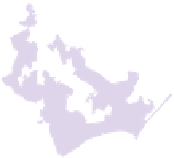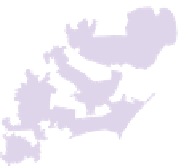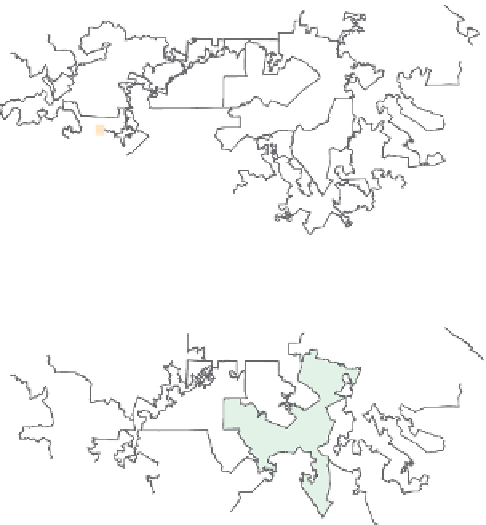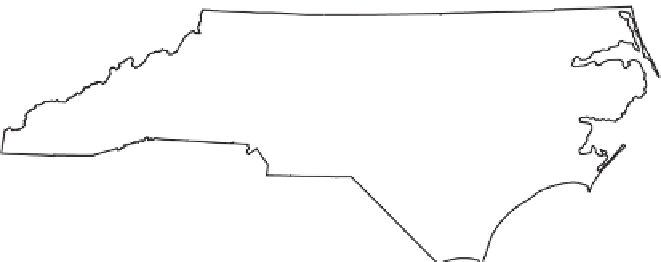Geography Reference
In-Depth Information
After 1990 Census
District
5
3
6
6
3
District
10
District
4
District
6
District
3
District
2
District
11
District
9
District
3
District
8
3
District 3
ELECTORAL GEOGRAPHY
District
7
North Carolina: 1st Congressional
District
North Carolina: 12th Congressional
District
After 2000 Census
3
District
13
Figure 8.17
Electoral Geography.
North Carolina's
congressional districts in 1992 and 2002. In
1992, North Carolina concentrated minori-
ties into majority-minority districts. In 2002,
North Carolina made its districts more com-
pact and defended them on criteria other than
race, in accordance with Supreme Court deci-
sions during the 1990s.
District
5
6
District
4
District
6
District
10
District
3
District
11
District
2
9
District
8
District
9
District 3
0
100
200 Kilometers
District
7
Data from: United States
0
50
100 Miles
Census, 2011.
for the election of a minority to occur. For example, if a
government has to draw ten districts in a State that is 60
percent white, 30 percent African American, and 10 per-
cent Hispanic, it can easily dilute the minority voters by
splitting
them among multiple districts, ensuring that the
white population holds the majority in each district.
In 1982, the United States Congress amended the
1965 Voting Rights Act by outlawing districts that have
the effect of weakening minority voting power. In a series
of decisions, the courts interpreted this amendment to
mean States needed to redistrict in a way that would ensure
minority representation. Using this criterion in the redis-
tricting that followed the 1990 census, States increased
the number of majority-minority districts in the House of
Representatives from 27 to 52.
Majority-minority dis-
tricts
are packed districts in which a majority of the pop-
ulation is from the minority. In the hypothetical State
described above, a redistricting following this criterion
could have the goal of creating at least three majority-
minority districts and a fourth where minorities had a siz-
able enough population to infl uence the outcome of the
election.
Ideally, majority-minority districts would be com-
pact and contiguous and follow existing political units.
Political geographers Jonathan Leib and Gerald Webster
have researched the court cases that have resulted from
trying to balance these often-confl icting criteria. To pack
minorities who do not live compactly and contiguously,
States have drawn bizarrely shaped districts, connecting
minority populations with meandering corridors and fol-
lowing Interstates to connect urban areas that have large
minority populations (Fig. 8.18).
Strange-looking districts constructed to attain cer-
tain political ends are nothing new in American politics.
In 1812, Governor Elbridge Gerry of Massachusetts
signed into law a district designed to give an advantage
to his party—a district that looked so odd to artist Gilbert
Stuart that he drew it with a head, wings, and claws. Stuart
called it the “salamander district,” but a colleague immor-
talized it by naming it a gerrymander (after the governor).
Ever since, the term
gerrymandering
has been used to
describe “redistricting for advantage.” Certainly, many of
the districts now on the United States electoral map may
be seen as gerrymanders, but for an important purpose:
to provide representation to minorities who, without it,
would not be represented as effectively in the House of
Representatives. Despite this well-intended goal, others
argue that the packing of minorities into majority-minority
districts simply concentrates minority votes, creating a
countrywide government that is less responsive to minor-
ity concerns.
The larger point is that the spatial organization of
voting districts is a fundamentally geographical phenom-
enon, and it can have profound impacts on who is rep-
resented and who is not—as well as peoples' notions of
fairness. And that is only the beginning. The voting pat-
terns that emerge from particular elections can help rein-
force a sense of regionalism and can shape a government's






























































































